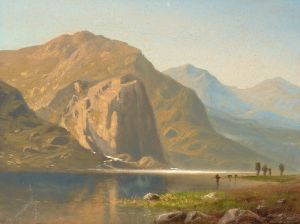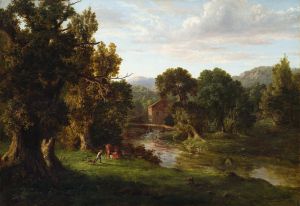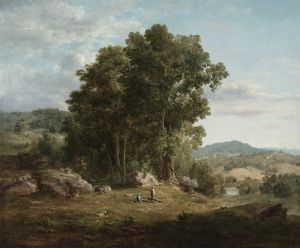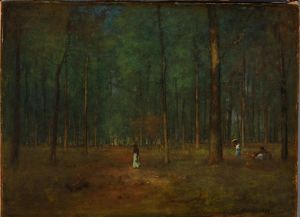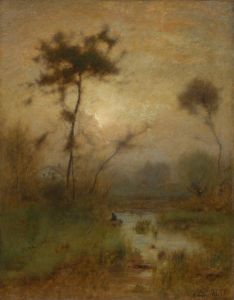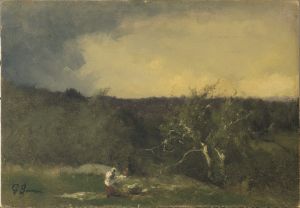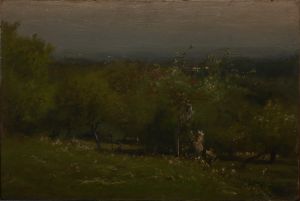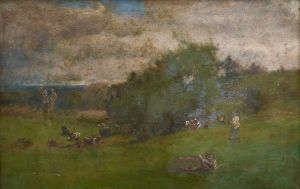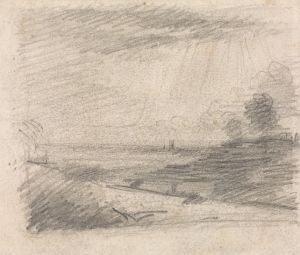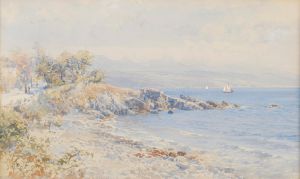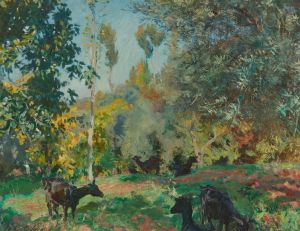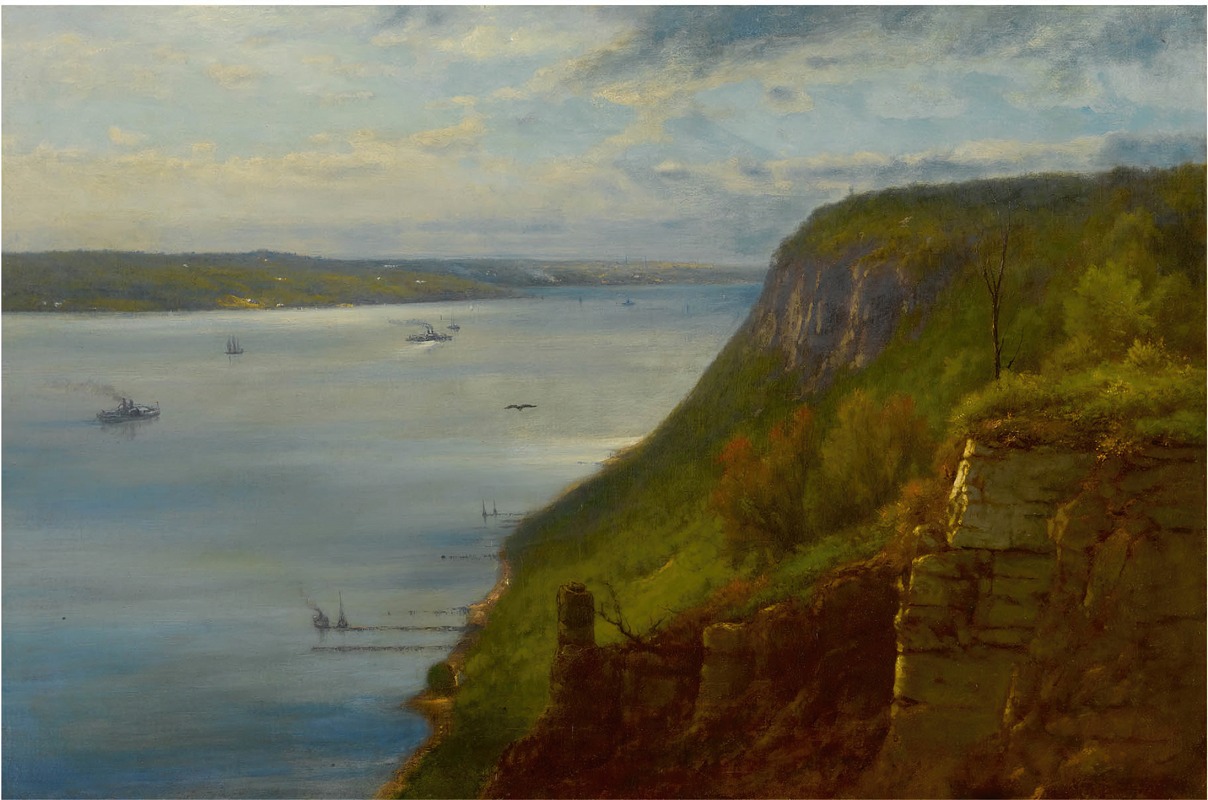
Palisades on the Hudson
A hand-painted replica of George Inness’s masterpiece Palisades on the Hudson, meticulously crafted by professional artists to capture the true essence of the original. Each piece is created with museum-quality canvas and rare mineral pigments, carefully painted by experienced artists with delicate brushstrokes and rich, layered colors to perfectly recreate the texture of the original artwork. Unlike machine-printed reproductions, this hand-painted version brings the painting to life, infused with the artist’s emotions and skill in every stroke. Whether for personal collection or home decoration, it instantly elevates the artistic atmosphere of any space.
George Inness's painting "Palisades on the Hudson" is a notable work by the American landscape painter, who is often associated with the Hudson River School, although his style evolved significantly throughout his career. Inness was born in 1825 in Newburgh, New York, and became one of the most influential American artists of the 19th century. His work is celebrated for its emotive and atmospheric qualities, which often reflect his interest in the spiritual and the sublime in nature.
"Palisades on the Hudson" depicts the Palisades, a line of steep cliffs along the west side of the lower Hudson River in northeastern New Jersey and southern New York. This area was a popular subject for artists of the Hudson River School, who were drawn to its dramatic natural beauty and the interplay of light and shadow on the cliffs and water.
Inness's approach to landscape painting was distinct from many of his contemporaries. While the Hudson River School painters often focused on detailed and realistic depictions of nature, Inness was more interested in capturing the mood and atmosphere of a scene. His work often features softer brushwork and a more subdued palette, which can be seen in "Palisades on the Hudson." This painting exemplifies his mature style, where he moved away from the precise realism of his early work towards a more impressionistic approach.
The painting likely dates from the latter part of Inness's career, when he was increasingly influenced by the philosophical ideas of Emanuel Swedenborg, a Swedish theologian whose writings emphasized the spiritual dimension of the natural world. Inness believed that art should convey a sense of the divine presence in nature, and his landscapes often evoke a sense of tranquility and introspection.
In "Palisades on the Hudson," Inness captures the serene beauty of the landscape with a focus on the harmonious relationship between the land, water, and sky. The composition is balanced, with the cliffs providing a strong vertical element that contrasts with the horizontal expanse of the river. The use of light and shadow adds depth and dimension to the scene, while the soft, diffused light creates a peaceful and contemplative mood.
Inness's work was highly regarded during his lifetime, and he received numerous accolades and commissions. Today, his paintings are held in major museums and collections across the United States, including the Metropolitan Museum of Art in New York and the National Gallery of Art in Washington, D.C. "Palisades on the Hudson" remains an important example of his contribution to American landscape painting and his ability to convey the spiritual essence of the natural world.
Inness passed away in 1894, but his legacy continues to influence artists and art enthusiasts. His unique approach to landscape painting, which combines elements of realism and impressionism with a deep spiritual sensibility, has secured his place as one of the foremost American painters of the 19th century.






